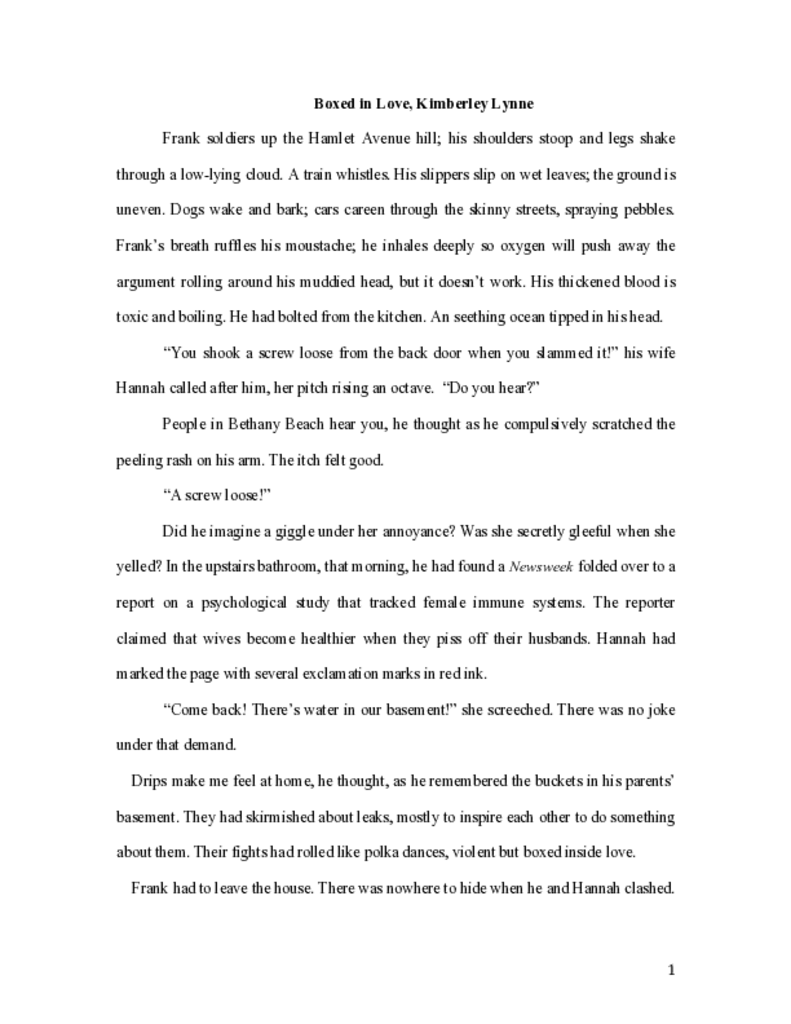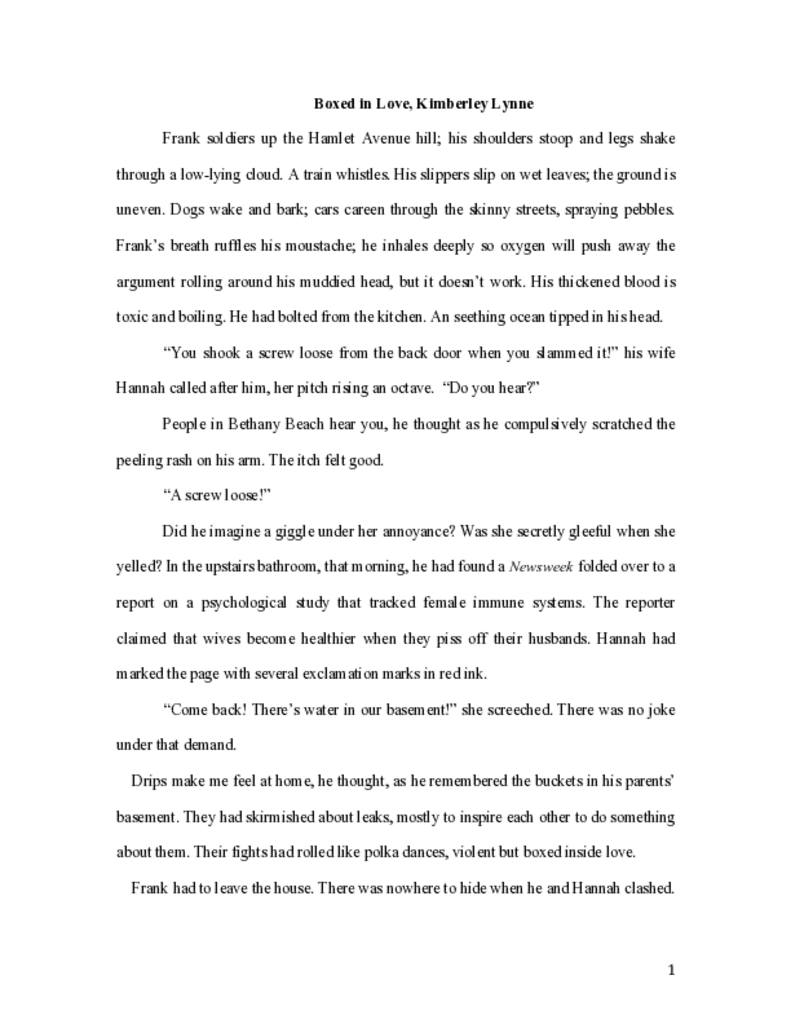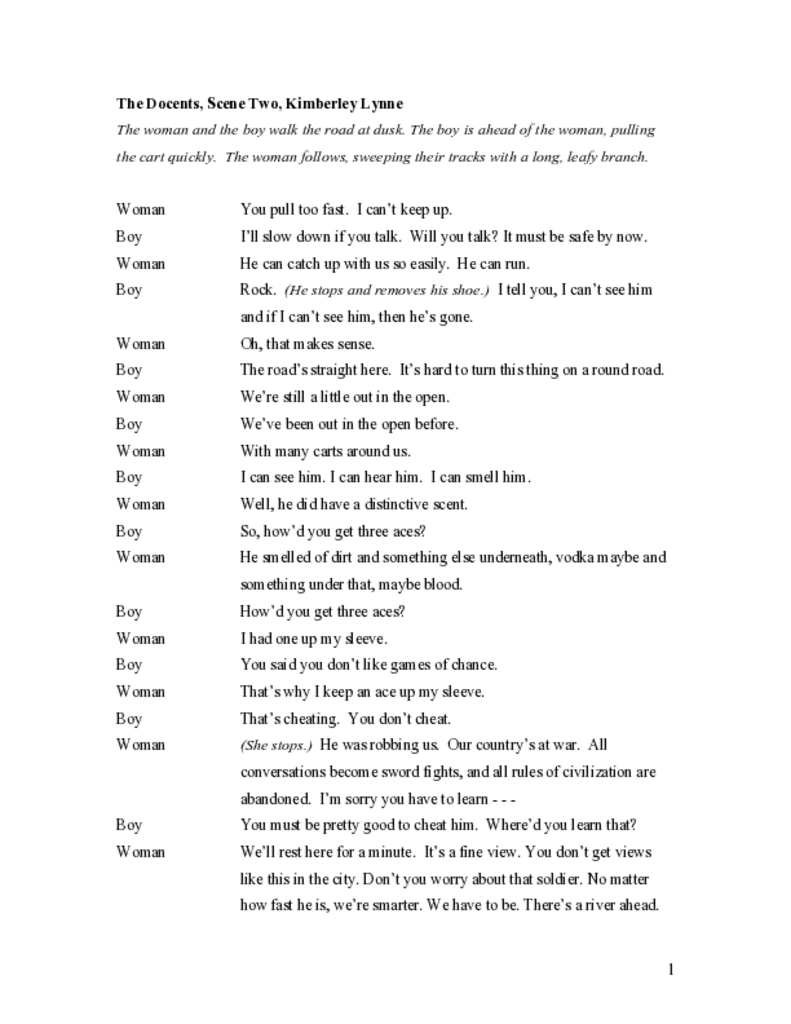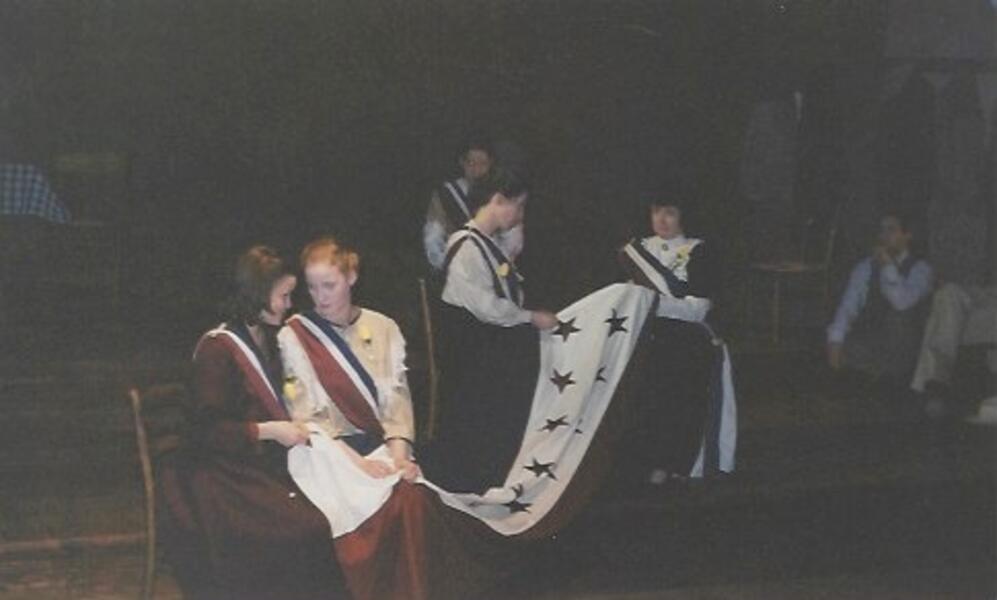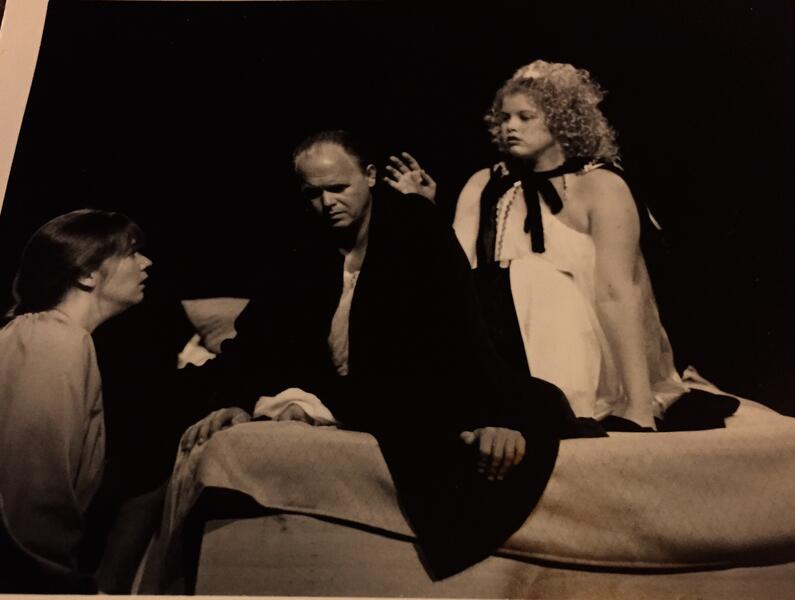About Kimberley
Baltimore City
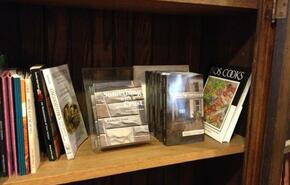
My primary noun is writer, and I’ve been weaving stories for as long as I can remember. I tell a span of narrative from historical fiction to local Baltimore and Maryland folklore.
Writing is a mysterious adventure and a tool with which to process this crazy reality, and I began journaling at nine in order to parse out the baffling world. One ancient text equates word to deity; that makes us writers acolytes with a responsibility to serve.
I teach and that experience of teaching… more
Writing is a mysterious adventure and a tool with which to process this crazy reality, and I began journaling at nine in order to parse out the baffling world. One ancient text equates word to deity; that makes us writers acolytes with a responsibility to serve.
I teach and that experience of teaching… more
Jump to a project:
Something with a Crust
Baltimore, and especially the neighborhood of Hamilton, grants stories daily.
In 2013, I graduated from the University of Baltimore's M.F.A. in Creative Writing and Publishing Design, and my thesis was a collection of short stories from Hamilton in a book that I designed.
Stories included in the collection: Keys (published in the Baltimore Fish Bowl, February 2013), Boxed in Love (posted below), A New Minefield, Baked (February 2014 Fiction Contest winner, What Weekly Magazine), The Guru of Harford Road (published in the Baltimore Fish Bowl, March 2013), Tree People, A Little Wilderness, Next Door, and The Whim of the Great Magnet.
"Many of the characters in Kimberley Lynne's collection have seen better days - key makers and mower kings, cello-killing artists and pot pie-eating burglars - simultaneously bizarre and familiar. Make their acquaintance, check out the kitschy lawn statues, share a Natty Boh and a bag of Utz. These stories of people caught between country and city, traversing tradition and change, are Lynne's love letters to a loco neighborhoood."
Gregg Wilhelm, Founder, CityLit Project
In 2013, I graduated from the University of Baltimore's M.F.A. in Creative Writing and Publishing Design, and my thesis was a collection of short stories from Hamilton in a book that I designed.
Stories included in the collection: Keys (published in the Baltimore Fish Bowl, February 2013), Boxed in Love (posted below), A New Minefield, Baked (February 2014 Fiction Contest winner, What Weekly Magazine), The Guru of Harford Road (published in the Baltimore Fish Bowl, March 2013), Tree People, A Little Wilderness, Next Door, and The Whim of the Great Magnet.
"Many of the characters in Kimberley Lynne's collection have seen better days - key makers and mower kings, cello-killing artists and pot pie-eating burglars - simultaneously bizarre and familiar. Make their acquaintance, check out the kitschy lawn statues, share a Natty Boh and a bag of Utz. These stories of people caught between country and city, traversing tradition and change, are Lynne's love letters to a loco neighborhoood."
Gregg Wilhelm, Founder, CityLit Project
Dredging the Choptank
There are more things in heaven and earth, Horatio/Than are dreamt in your philosophy.
Hamlet, 1.5, William Shakespeare
Dredging the Choptank, my debut novel about mysterious happenings in the lonely backwaters of Maryland's Eastern Shore, finds its inspiration in the legends and folklore of the shore's Dorchester County. The novel, published by Apprentice House, was inspired by my encounter with the Dorchester County Arts Center who commissioned me to create a ghost walking tour for Cambridge, Maryland in 2003. Soaked with local ghost folklore, the tour still spans High Street from the Christ Church graveyard to Long Wharf. As I researched local folklore as the basis for the tour, an idea for a book began to take shape: a supernatural thriller about a writer investigating a ghostly legend. The protagonist, Maryland, discovers a Native American Indian burial ground under the High Street jail and that fable, in which water is the enemy, eventually engulfs and transforms her.
But Dredging the Choptankis more than a supernatural thriller; it's a layman's guide to the spectral tales of Dorchester County. The book is crafted to inspire readers to uncover their own ghost folklore and fact-based history - and to help them recognize that these two elements of modern society are forever entwined.
Hamlet, 1.5, William Shakespeare
Dredging the Choptank, my debut novel about mysterious happenings in the lonely backwaters of Maryland's Eastern Shore, finds its inspiration in the legends and folklore of the shore's Dorchester County. The novel, published by Apprentice House, was inspired by my encounter with the Dorchester County Arts Center who commissioned me to create a ghost walking tour for Cambridge, Maryland in 2003. Soaked with local ghost folklore, the tour still spans High Street from the Christ Church graveyard to Long Wharf. As I researched local folklore as the basis for the tour, an idea for a book began to take shape: a supernatural thriller about a writer investigating a ghostly legend. The protagonist, Maryland, discovers a Native American Indian burial ground under the High Street jail and that fable, in which water is the enemy, eventually engulfs and transforms her.
But Dredging the Choptankis more than a supernatural thriller; it's a layman's guide to the spectral tales of Dorchester County. The book is crafted to inspire readers to uncover their own ghost folklore and fact-based history - and to help them recognize that these two elements of modern society are forever entwined.
The Mirror Up to Life
The stage can be utilized as a platform for social justice, viewed through the prism of metaphor.
Many of my plays reflect and explore societal issues: It'll Do a Body Good (short play about the milk conspiracy), The Last Battle of the American Revolution (final days of the suffrage vote), One Particular Saturday (Baltimore 1968 riots), Jury Duty (ineffective legal system in the City Courts), The Docents (protection of art during war), Fat Club (obesity in America), The Return of the 5th Sister (female self actualization and the end of the patriarch), The Benefactor (paucity of feminism in the immediate future), The Mad Wooing (risking death, mutilation and banishment to maintain performing art), The Ring (poor citizens on display in a famine kitchen), and Sixteen Thousand and One (short about the Baltimore's abandoned houses.)
In 2008, as part of the University of Baltimore's Baltimore '68: Riots and Rebirth conference on the fortieth anniversary of Martin Luther King's assasination, I acquired permission from riot witnesses and wove their memories into a devised narrative, One Particular Saturday, that was performed in the Wright Theater during the conference and then used to teach conflict resolution in the classroom. In the language of six witness accounts, five teenagers and a businessman re-enact the anger, violence, and fear experienced during Baltimore’s 1968 riots. Told from the perspective of a National Guardsman, a young looter, a social activist and a store-owner, One Particular Saturday encourages an open forum in which to discuss race relations, transforming misunderstanding into healing.
Thanks to Dr. Elizabeth Nix and her graduate students for interviewing all those witnesses who had been holding those stories for forty years. I was born here, and I didn't know half of the history.
Many of my plays reflect and explore societal issues: It'll Do a Body Good (short play about the milk conspiracy), The Last Battle of the American Revolution (final days of the suffrage vote), One Particular Saturday (Baltimore 1968 riots), Jury Duty (ineffective legal system in the City Courts), The Docents (protection of art during war), Fat Club (obesity in America), The Return of the 5th Sister (female self actualization and the end of the patriarch), The Benefactor (paucity of feminism in the immediate future), The Mad Wooing (risking death, mutilation and banishment to maintain performing art), The Ring (poor citizens on display in a famine kitchen), and Sixteen Thousand and One (short about the Baltimore's abandoned houses.)
In 2008, as part of the University of Baltimore's Baltimore '68: Riots and Rebirth conference on the fortieth anniversary of Martin Luther King's assasination, I acquired permission from riot witnesses and wove their memories into a devised narrative, One Particular Saturday, that was performed in the Wright Theater during the conference and then used to teach conflict resolution in the classroom. In the language of six witness accounts, five teenagers and a businessman re-enact the anger, violence, and fear experienced during Baltimore’s 1968 riots. Told from the perspective of a National Guardsman, a young looter, a social activist and a store-owner, One Particular Saturday encourages an open forum in which to discuss race relations, transforming misunderstanding into healing.
Thanks to Dr. Elizabeth Nix and her graduate students for interviewing all those witnesses who had been holding those stories for forty years. I was born here, and I didn't know half of the history.
The Return of the 5th Sister
I saw a surrealist painting by Kenneth Koskela in a tiny gallery in southern Wisconsin, and I had to write in response. Thanks to Joe Dennison for taking notes as we drove to the Minneapolis Fringe Festival.
In this play, four sisters live alone on a farm in a male-dominated society. Twenty years earlier, their older sister Eve left the farm in protest to the religious oppression by the local patriarch. One autumn morning, Eve appears in the apple orchard, grown to a silent giant. She shakes blank pages from the trees, and one sister collects those pages. As the day wanes, messages emerge on the pages. By the end of the day, nature is moving faster than the usual, and fertility transforms fall into spring. Several animals and one of the sisters become mysteriously pregnant, and the corn grows as tall as the farmhouse.
The Return of the 5thSister is a magic realism tale of four women regaining their strength, breaking out from underneath the patriarch and awaking their potential as individuals.
“The Baltimore Playwrights Festival has produced few – if any – fables in its 25 years, so Kimberley Lynne’s The Return of the 5th Sister is an original, odd and welcome addition.”
J. Wynn Rousuck, Baltimore Sun, August 2006
Production History:
In this play, four sisters live alone on a farm in a male-dominated society. Twenty years earlier, their older sister Eve left the farm in protest to the religious oppression by the local patriarch. One autumn morning, Eve appears in the apple orchard, grown to a silent giant. She shakes blank pages from the trees, and one sister collects those pages. As the day wanes, messages emerge on the pages. By the end of the day, nature is moving faster than the usual, and fertility transforms fall into spring. Several animals and one of the sisters become mysteriously pregnant, and the corn grows as tall as the farmhouse.
The Return of the 5thSister is a magic realism tale of four women regaining their strength, breaking out from underneath the patriarch and awaking their potential as individuals.
“The Baltimore Playwrights Festival has produced few – if any – fables in its 25 years, so Kimberley Lynne’s The Return of the 5th Sister is an original, odd and welcome addition.”
J. Wynn Rousuck, Baltimore Sun, August 2006
Production History:
- Hood College production under the title The Return of the Fifth Sister, Frederick, MD, April 2006
- Capitol Fringe Festival production, July 2006, under AEA Fringe contract
- Mobtown Players production as part of the Baltimore Playwrights Festival, August 2006
- Stillpointe Theatre, December 2012
- Urbana University may produce a student production, spring 2020
The Docents
Sometimes, PBS documentaries spark a story in me.
When Japan invaded China in 1939, the Chinese packed the contents of the Beijing museum into peasant carts and disguised citizens as refugees who rolled the treasure in front of the battle and protected China’s art history from the marauding invaders.
In the beginning of The Docents, two volunteers, a woman and a boy, have become separated from their platoon of carts. Alone, pulling their prized cargo only a few miles from enemy lines and surrounded by war, the two encounter an AWOL soldier, a thief, who slowly determines that they are carrying precious artwork wrapped only in burlap.
Metaphoric for the sacrifice modern artists make by continuing to create art in a monetary and militaristic society, The Docents praises the efforts of those who return the precious gift of art to their community.
The Docents was produced at Mobtown Players, July 2010.
When Japan invaded China in 1939, the Chinese packed the contents of the Beijing museum into peasant carts and disguised citizens as refugees who rolled the treasure in front of the battle and protected China’s art history from the marauding invaders.
In the beginning of The Docents, two volunteers, a woman and a boy, have become separated from their platoon of carts. Alone, pulling their prized cargo only a few miles from enemy lines and surrounded by war, the two encounter an AWOL soldier, a thief, who slowly determines that they are carrying precious artwork wrapped only in burlap.
Metaphoric for the sacrifice modern artists make by continuing to create art in a monetary and militaristic society, The Docents praises the efforts of those who return the precious gift of art to their community.
The Docents was produced at Mobtown Players, July 2010.
The Benefactor
I read a story about a female visual artist who used her own blood as paint and exploring that thought resulted in my protagonist, Judith Waterson.
Set in the immediate future, the play world of The Benefactor is a patriarchal one. The ratio of women to men is tipped. The remaining women have lost property, education and child rights. Former painter and activist, Judith Waterson supports herself as a professional surrogate and is eight months pregnant and guarded by her midwife Maria. Author David Phoenix contracts Judith to discuss art in the last month of her difficult confinement in order to learn a woman’s voice for a book he is ghost writing.
As they discuss the gender-specificity of art, they form an unexpected friendship, and through this relationship, they discover each other’s secrets. David really wants Judith’s permission to write about her composer father. The child Judith is carrying is asexual, illegal and part of an evolution revolution. The midwife is part of a genderless movement, and Judith is a prisoner in the birthing pod. Part mystery and part love story, the play considers gender in art and tracks a surprising friendship between two very different people and explores themes of women's rights.
The play was produced by Stillpointe Theatre in February 2015. The Dramatist Guild magazine featured The Benefactor in their Baltimore arts news section of the July 2015 issue.
Set in the immediate future, the play world of The Benefactor is a patriarchal one. The ratio of women to men is tipped. The remaining women have lost property, education and child rights. Former painter and activist, Judith Waterson supports herself as a professional surrogate and is eight months pregnant and guarded by her midwife Maria. Author David Phoenix contracts Judith to discuss art in the last month of her difficult confinement in order to learn a woman’s voice for a book he is ghost writing.
As they discuss the gender-specificity of art, they form an unexpected friendship, and through this relationship, they discover each other’s secrets. David really wants Judith’s permission to write about her composer father. The child Judith is carrying is asexual, illegal and part of an evolution revolution. The midwife is part of a genderless movement, and Judith is a prisoner in the birthing pod. Part mystery and part love story, the play considers gender in art and tracks a surprising friendship between two very different people and explores themes of women's rights.
The play was produced by Stillpointe Theatre in February 2015. The Dramatist Guild magazine featured The Benefactor in their Baltimore arts news section of the July 2015 issue.
The Last Battle of the American Revolution
Theatre can bring history to life.
This play takes place mainly in August 1920, when both fervent sides of the 72-year-old women’s suffrage issue descended upon the muggy city of Nashville to debate the hotly-contested resolution to ratify the Nineteenth Amendment. Even during those strict days of Prohibition, liquor flowed through the Hermitage Hotel where both Antis and Suffs encamped; the vote count shifted every day as bribes were bandied, telephones tapped and bargains made. In the midst of all those nefarious dealings, a young foot soldier for the National American Women’s Suffrage Association (NAWSA) named Prudence Delavan is tested by a shady offer from a Tennessean legislator who wants to exchange his precious vote for her chaste kiss. Supporting Prudence’s story, a loyal farmwife struggles with her husband’s archaic view of women, the head of the NAWSA wrestles with the morality of her political tactics, and a first-term legislator weighs whether his vote should guarantee him re-election or a clean conscience. In a time when women couldn’t speak in public without the taint of shame, they gracefully and tenaciously fought the remaining battle for the enfranchisement of half the country, believing in Susan B. Anthony’s dictum that “resistance to tyranny is obedience to God."
Production history:
This play takes place mainly in August 1920, when both fervent sides of the 72-year-old women’s suffrage issue descended upon the muggy city of Nashville to debate the hotly-contested resolution to ratify the Nineteenth Amendment. Even during those strict days of Prohibition, liquor flowed through the Hermitage Hotel where both Antis and Suffs encamped; the vote count shifted every day as bribes were bandied, telephones tapped and bargains made. In the midst of all those nefarious dealings, a young foot soldier for the National American Women’s Suffrage Association (NAWSA) named Prudence Delavan is tested by a shady offer from a Tennessean legislator who wants to exchange his precious vote for her chaste kiss. Supporting Prudence’s story, a loyal farmwife struggles with her husband’s archaic view of women, the head of the NAWSA wrestles with the morality of her political tactics, and a first-term legislator weighs whether his vote should guarantee him re-election or a clean conscience. In a time when women couldn’t speak in public without the taint of shame, they gracefully and tenaciously fought the remaining battle for the enfranchisement of half the country, believing in Susan B. Anthony’s dictum that “resistance to tyranny is obedience to God."
Production history:
- Produced in full, March 2001, AXIS Theatre, Baltimore, MD
- Educational version traveled the Maryland Public School system via Young Audiences of Maryland, 2001-2004
- Staged reading as part of a Spotlight UB/League of Women Voters fundraiser, February 2017
- Staged reading, Page to Stage, Kennedy Center, September 2019. To be staged again summer 2020 by The Law Project as part of the centenniel celebration of suffrage.
Love for Words
History can be mysterious and only viewed through a glass darkly.
In Scene One of Love for Words, William Shakespeare is writing King Lear with the assistance of his muse. During the rest of the play, Shakespeare is dying in Stratford and has abandoned the writing life but cannot eliminate writing from his life. He is tended by his wife Anne and daughter Susanna, who quibble over him and his will.
Through a fairy show populated by apparitions from the future and patterned after MacBeth's march of kings, the Muse shows William his legend and convinces him that his work should be preserved for future generations. After some will-switching and money-trading, William contracts Susanna to deliver the true play copies to publishers Heminge and Candell seven years after his own death.
The play explores the artistic process and its impact on personal relationships and parental responsibility. It wrestles with what it means to be creative and how expensive that gift can be. It theorizes that not only did Shakespeare write the canon assigned to him, but he intentionally propagated confusion about the origination of his own work.
AXIS Theatre commissioned me to write a play about Shakespeare that was produced in the Other Voices program in June 1997 and September 2000 at the Baltimore Shakespeare Festival under AEA contract. A staged reading of the play's revisions was part of Summer Ink at Hood College in September 2019 and will be produced by the Frederick Shakespeare Festival in summer 2020.
In Scene One of Love for Words, William Shakespeare is writing King Lear with the assistance of his muse. During the rest of the play, Shakespeare is dying in Stratford and has abandoned the writing life but cannot eliminate writing from his life. He is tended by his wife Anne and daughter Susanna, who quibble over him and his will.
Through a fairy show populated by apparitions from the future and patterned after MacBeth's march of kings, the Muse shows William his legend and convinces him that his work should be preserved for future generations. After some will-switching and money-trading, William contracts Susanna to deliver the true play copies to publishers Heminge and Candell seven years after his own death.
The play explores the artistic process and its impact on personal relationships and parental responsibility. It wrestles with what it means to be creative and how expensive that gift can be. It theorizes that not only did Shakespeare write the canon assigned to him, but he intentionally propagated confusion about the origination of his own work.
AXIS Theatre commissioned me to write a play about Shakespeare that was produced in the Other Voices program in June 1997 and September 2000 at the Baltimore Shakespeare Festival under AEA contract. A staged reading of the play's revisions was part of Summer Ink at Hood College in September 2019 and will be produced by the Frederick Shakespeare Festival in summer 2020.
Teaching and Performance
I teach on and off the stage; sometimes my plays re-tell history. I have been commissioned to write educational plays for the Reginald Lewis Museum and Young Audiences of Maryland.
In the classroom, I often use performance as assessment. Even in non-performance courses, I encourage students to share their ideas with the class in order to prepare them for future work presentations.
I like getting students on their feet. Theatre is a performative, ensemble art, and improvising a scene to an answer can break writing block. I include visiting actors in my screenwriting and playwriting workshops in order for the authors to hear their words aloud and outside their own heads.
I trained with vocal master Kristin Linklater, and (with her permission) I utilize the guided meditation and free-writing of her River Stories program with both playwriting and acting students. The breathing exercises leading into the meditation allows students better access to their character's emotions.
An immersive writing residency also accesses emotionality and shifts identity. Over five summers, from 2012-2016, I accompanied American students to Northern Ireland for a month-long creative writing residency, Armagh Project, that was one of ieiMedia's summer offerings. The residency culminated in new plays and poems performed at the John Hewitt International Summer School in Armagh.
In solidarity with my students, I wrote a short play each summer that reflected Irish culture: Hood (the legend of executioner Lady Betty, 2012), Siren's Call (kelpie myth, 2013), Wild Bees (William Butler Yates fights with Sean O'Casey, 2014), A Million, Million Times (the Grace and Jospeh Plunkett love story in Kilmainham Gaol, 2015), and The Bird (Robin Hood-type Redmond O'Hanlon steals from the rich, 2016).
In the classroom, I often use performance as assessment. Even in non-performance courses, I encourage students to share their ideas with the class in order to prepare them for future work presentations.
I like getting students on their feet. Theatre is a performative, ensemble art, and improvising a scene to an answer can break writing block. I include visiting actors in my screenwriting and playwriting workshops in order for the authors to hear their words aloud and outside their own heads.
I trained with vocal master Kristin Linklater, and (with her permission) I utilize the guided meditation and free-writing of her River Stories program with both playwriting and acting students. The breathing exercises leading into the meditation allows students better access to their character's emotions.
An immersive writing residency also accesses emotionality and shifts identity. Over five summers, from 2012-2016, I accompanied American students to Northern Ireland for a month-long creative writing residency, Armagh Project, that was one of ieiMedia's summer offerings. The residency culminated in new plays and poems performed at the John Hewitt International Summer School in Armagh.
In solidarity with my students, I wrote a short play each summer that reflected Irish culture: Hood (the legend of executioner Lady Betty, 2012), Siren's Call (kelpie myth, 2013), Wild Bees (William Butler Yates fights with Sean O'Casey, 2014), A Million, Million Times (the Grace and Jospeh Plunkett love story in Kilmainham Gaol, 2015), and The Bird (Robin Hood-type Redmond O'Hanlon steals from the rich, 2016).
-
Video trailer for Armagh ProjectFilmmaker Peter Salisbury created this video from Armagh Project 2015, our month-long creative writing residency in Northern Ireland that culminates in a performance at the John Hewitt International Summer School Festival and has happily landed me on that soggy and magical isle for four summers.
Arts Producer
All experience bleeds into words. Collaboration is mandatory; even the novelist has an editor. I write to certain point and then need feedback. That's why I created the Emerging Voices Project.
While serving as the Spotlight UB Arts and Theater manager at the University of Baltimore for over a decade, I developed arts programming: the Emerging Voices Project (EVP), the Playwrights Lab, the African-American Arts Festival, Poe Night, Fall Laughing, AIDS Awareness Days, and Gay Expectations (that ultimately evolved into Iron Crow Theatre.)
Spotlight UB also produced theatrical productions and earned a reputation for social justice theatre: Assassins (for which I shared the Best Musical award with Ryan Haase of Stillpointe Theatre), The Vagina Monologues (which I directed two of the three times), Warren, The Laramie Project, The Exonerated, How I Learned to Drive, One Particular Saturday (which I devised and staged), and For Colored Girls Who Have Considered Suicide When the Rainbow is Enuf (which I co-directed.) The act of theatrical directing can show writer/directors pacing, transitions, and arc.
Through Emerging Voices Project, I workshopped new literary work by the UB community, including Kendra Kopelke's Hopper's Women. Kopelke wrote poems in response to Edward Hopper's extraordinary paintings and I staged them with live actresses and images of the artwork.
The Baltimore writing community and their burgeoning work continues to energize me.
While serving as the Spotlight UB Arts and Theater manager at the University of Baltimore for over a decade, I developed arts programming: the Emerging Voices Project (EVP), the Playwrights Lab, the African-American Arts Festival, Poe Night, Fall Laughing, AIDS Awareness Days, and Gay Expectations (that ultimately evolved into Iron Crow Theatre.)
Spotlight UB also produced theatrical productions and earned a reputation for social justice theatre: Assassins (for which I shared the Best Musical award with Ryan Haase of Stillpointe Theatre), The Vagina Monologues (which I directed two of the three times), Warren, The Laramie Project, The Exonerated, How I Learned to Drive, One Particular Saturday (which I devised and staged), and For Colored Girls Who Have Considered Suicide When the Rainbow is Enuf (which I co-directed.) The act of theatrical directing can show writer/directors pacing, transitions, and arc.
Through Emerging Voices Project, I workshopped new literary work by the UB community, including Kendra Kopelke's Hopper's Women. Kopelke wrote poems in response to Edward Hopper's extraordinary paintings and I staged them with live actresses and images of the artwork.
The Baltimore writing community and their burgeoning work continues to energize me.
